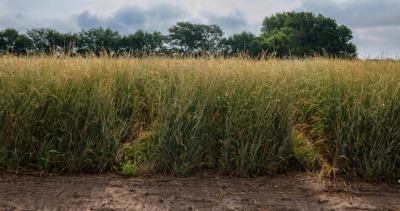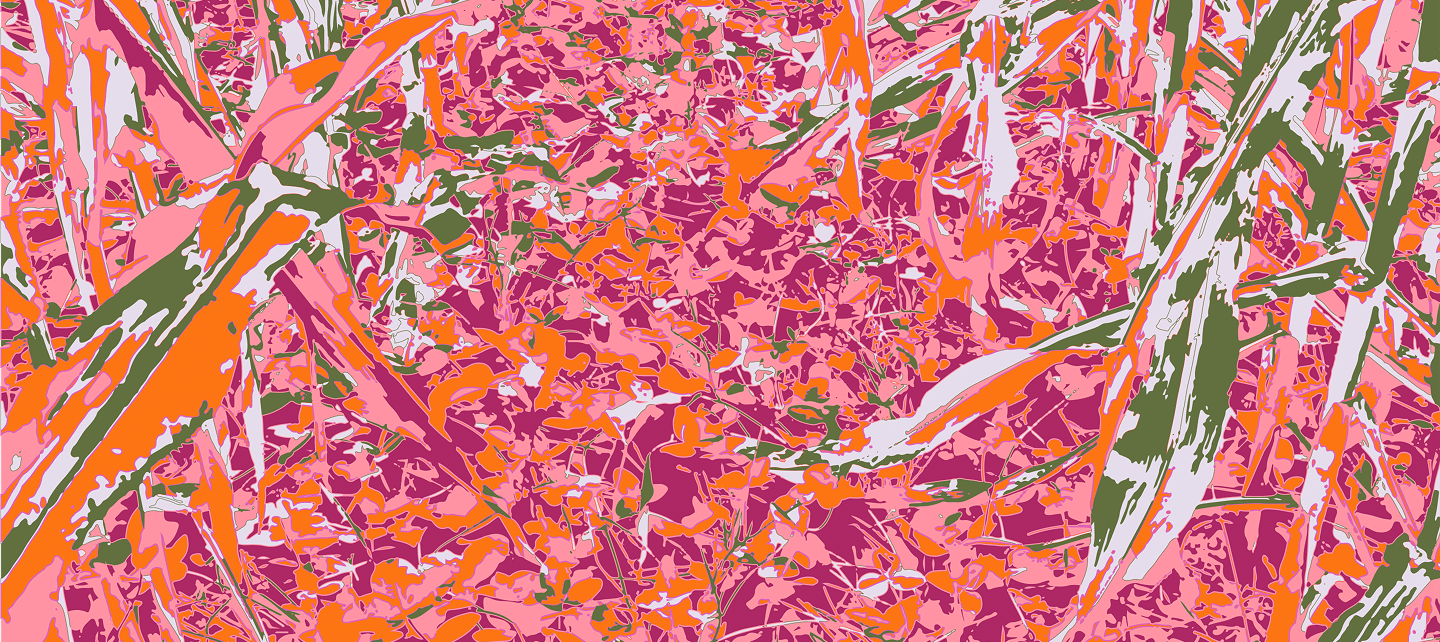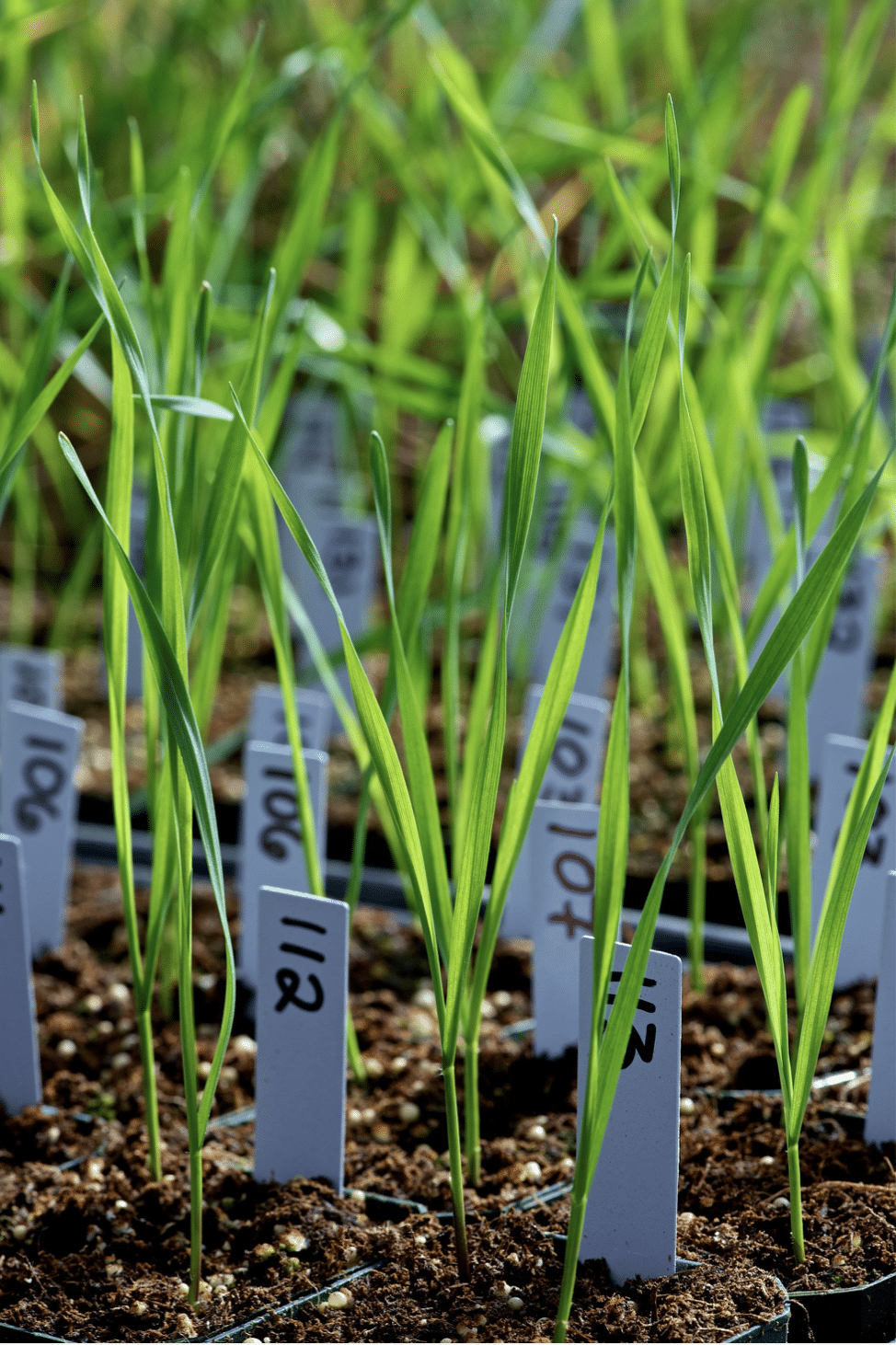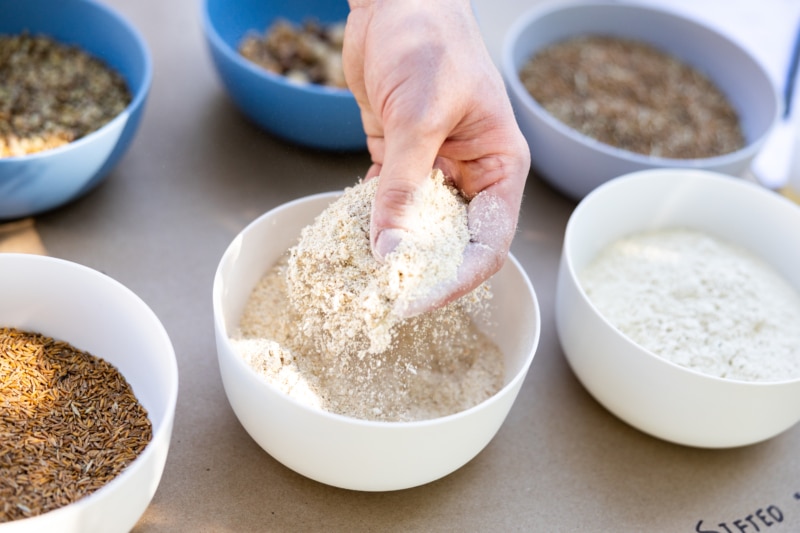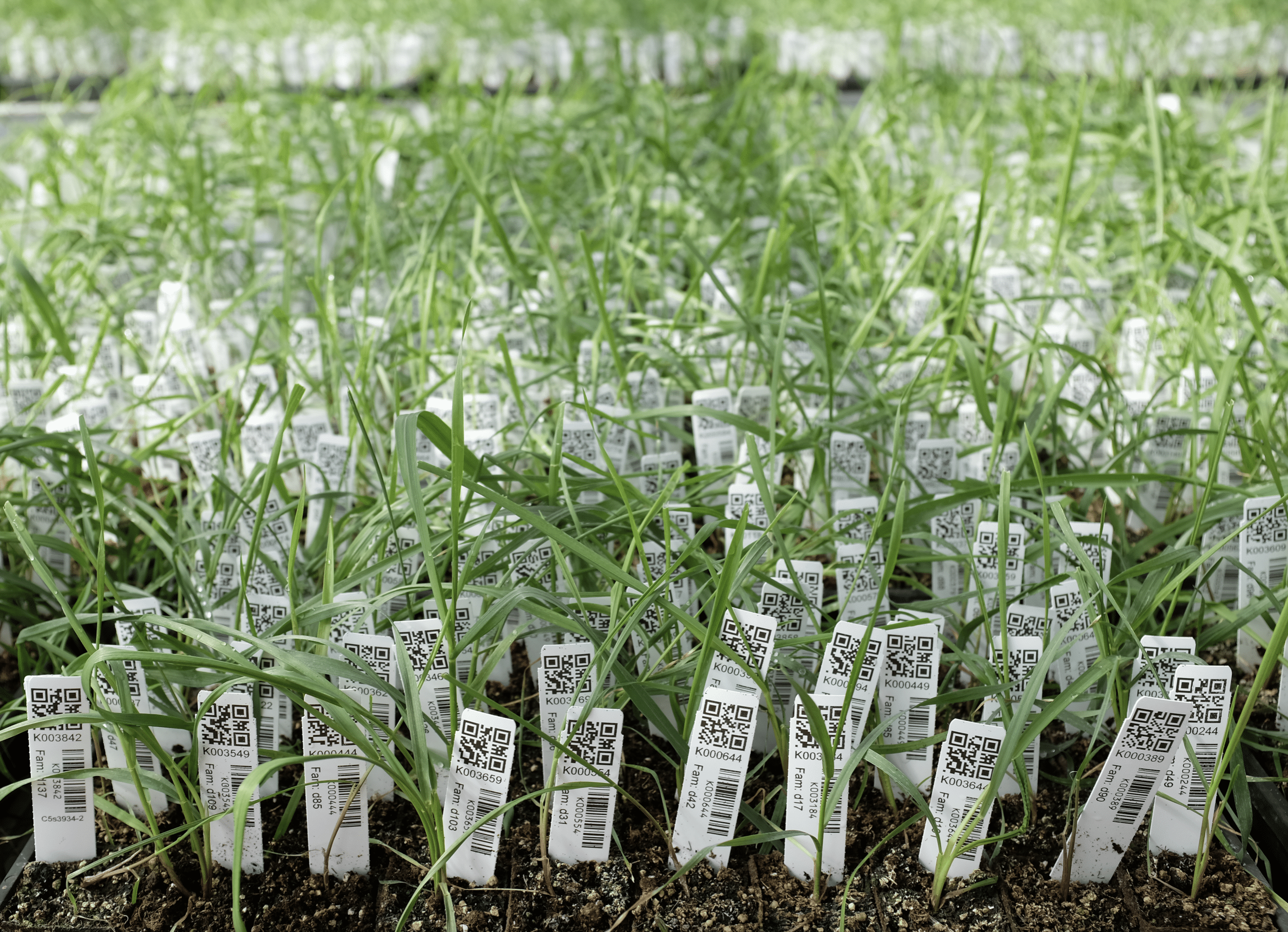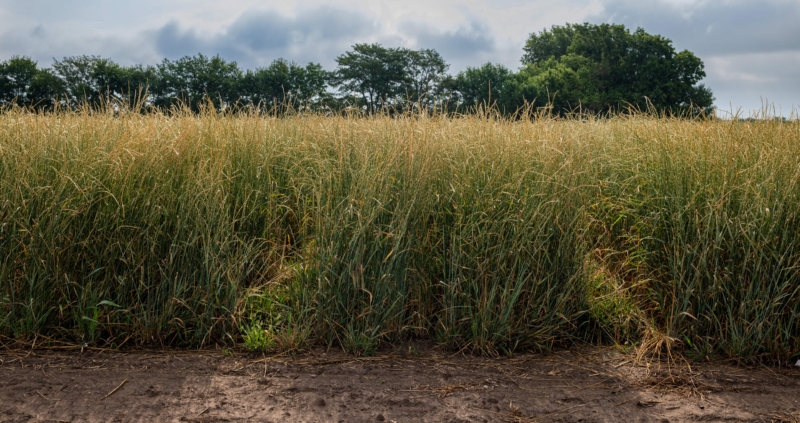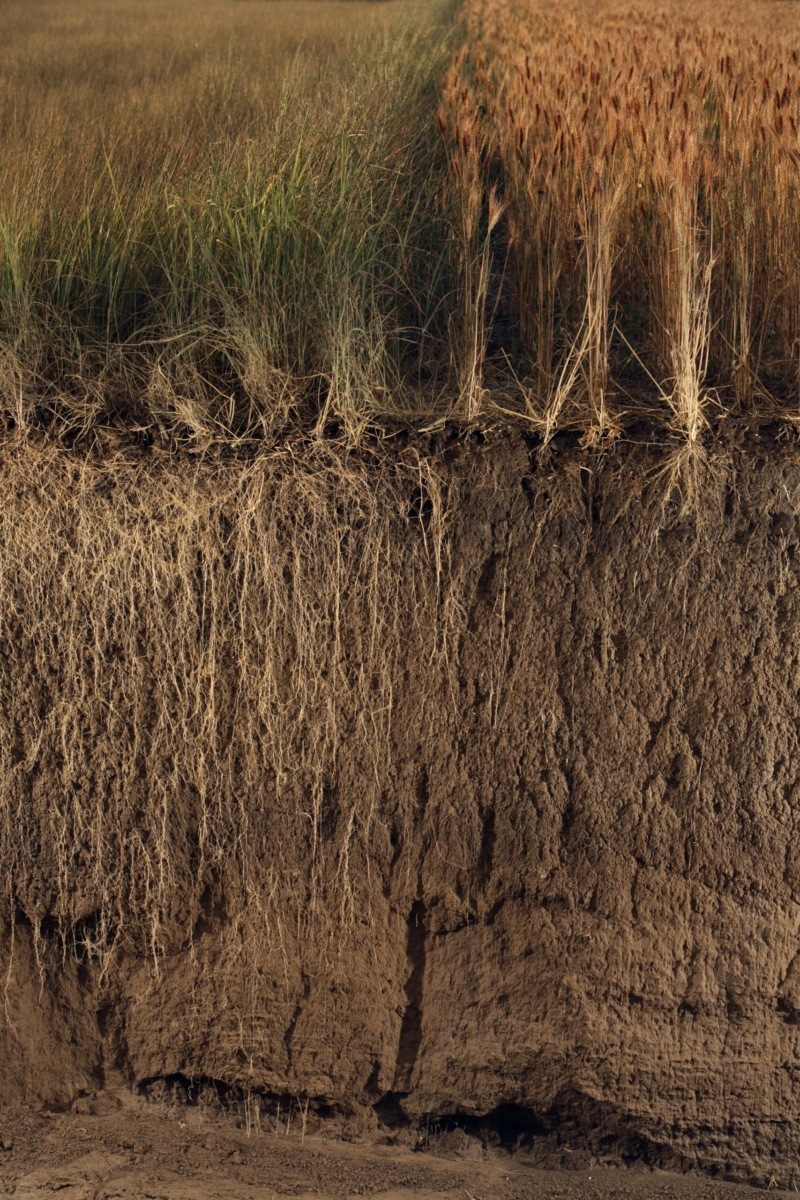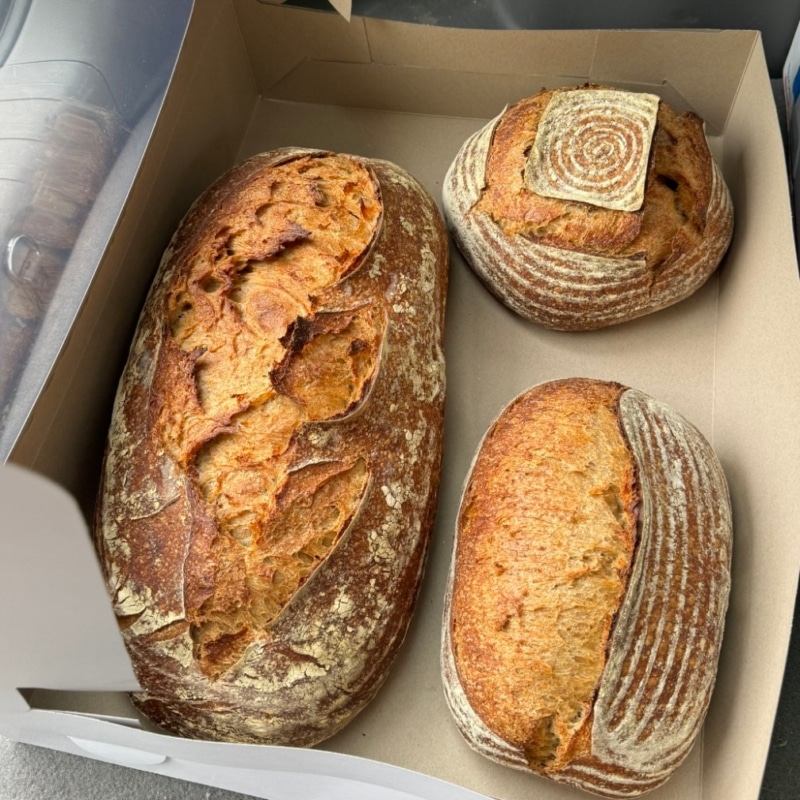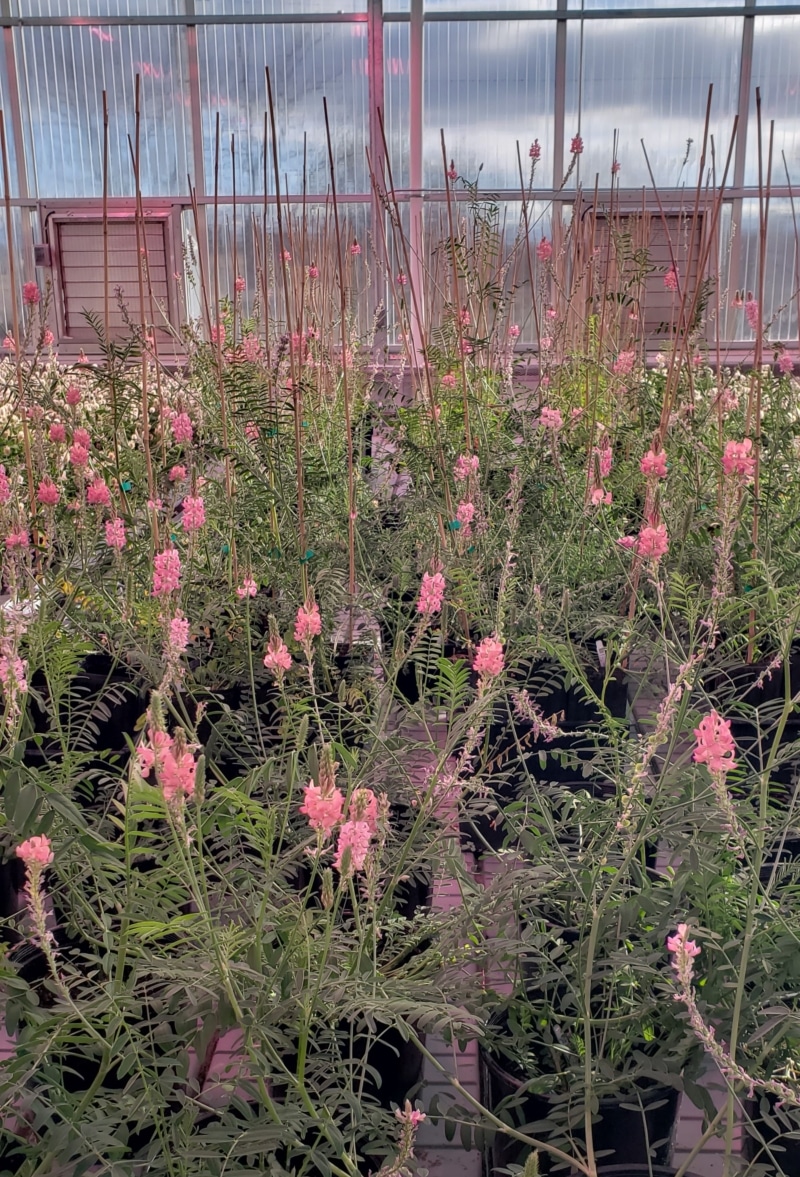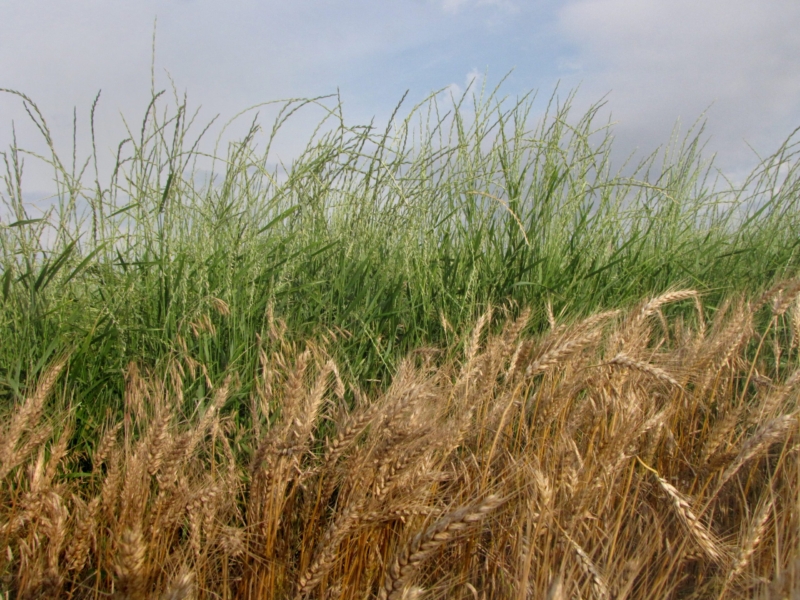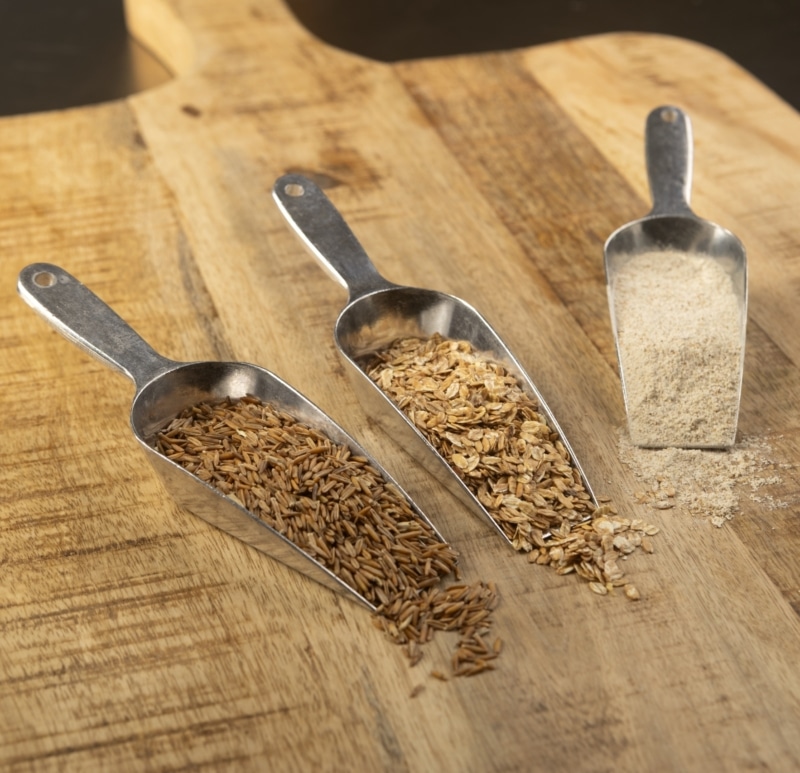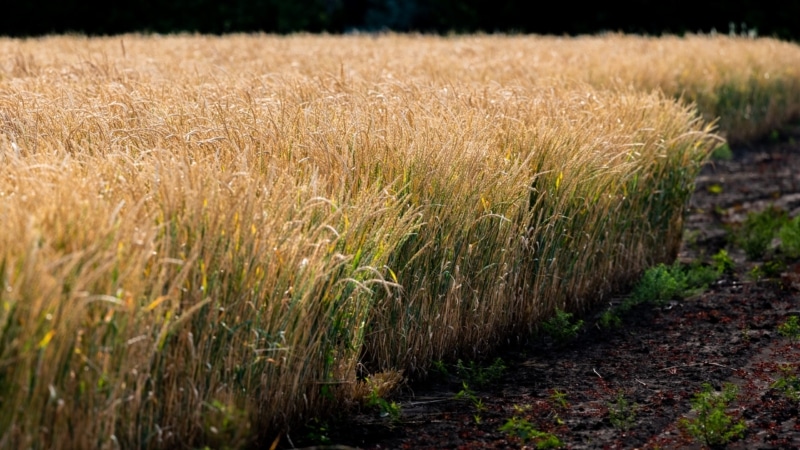Intermediate wheatgrass, the grass that produces Kernza® perennial grain, is being domesticated for its potential as a human food that also delivers notable ecological benefits. Research partners at the University of Minnesota’s intermediate wheatgrass breeding program have been working to improve the crop using traditional breeding and modern genomic tools such as genetic mapping and genomic selection, with a new research paper detailing these efforts using genomic prediction models to inform future breeding efforts.
The perennial grass Thinopyrum intermedium (intermediate wheatgrass [IWG]) is being domesticated as a food crop. With a deep root system and high biomass, IWG can help reduce soil and water erosion and limit nutrient runoff. As a novel grain crop undergoing domestication, IWG lags in yield, seed size, and other agronomic traits compared to annual grains. Better characterization of trait variation and identification of genetic markers associated with loci controlling the traits could help in further improving this crop. The University of Minnesota’s Cycle 5 IWG breeding population of 595 spaced plants was evaluated at two locations in 2021 and 2022 for agronomic traits plant height, grain yield, and spike weight, and domestication traits shatter resistance, free grain threshing, and seed size. Pairwise trait correlations were weak to moderate with the highest correlation observed between seed size and height (0.41). Broad-sense trait heritabilities were high (0.68–0.77) except for spike weight (0.49) and yield (0.44). Association mapping using 24,284 genome-wide single nucleotide polymorphism markers identified 30 main quantitative trait loci (QTLs) across all environments and 32 QTL-by-environment interactions (QTE) at each environment. The genomic prediction model significantly improved predictions when parents were used in the training set and significant QTLs and QTEs used as covariates. Seed size was the best predicted trait with model predictive ability (r) of 0.72; yield was predicted moderately well (r = 0.45). We expect this discovery of significant genomic loci and mostly high trait predictions from genomic prediction models to help improve future IWG breeding populations.
